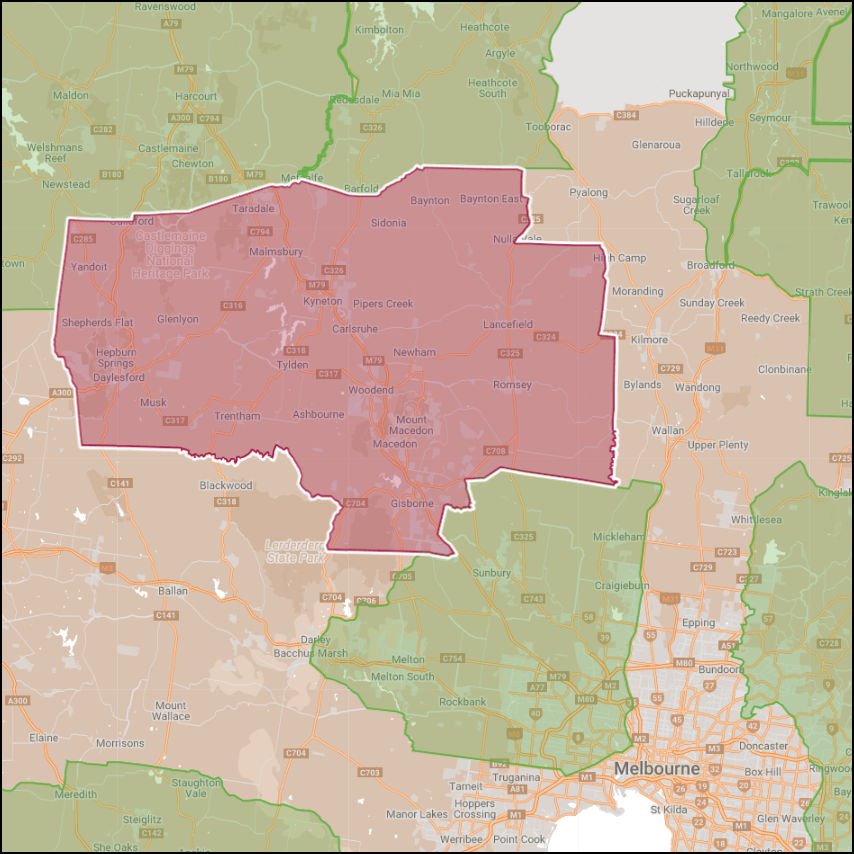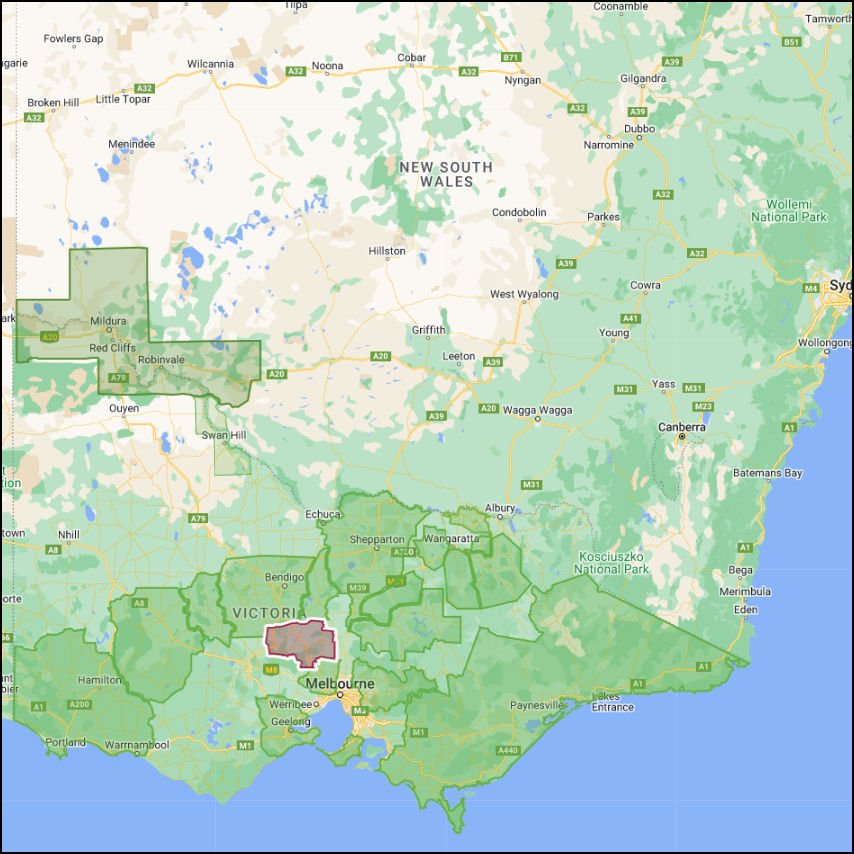The Macedon Ranges wine region forms part of Victoria’s Port Philip wine zone. The zone horseshoes around the state’s capital Melbourne and is shared with Mornington Peninsula, Geelong, Yarra Valley and Sunbury. Taking in the stunning Mount Macedon and Hanging Rock, the region extends from Gisborne to Baynton and Daylesford to Lancefield.
Less than an hour’s drive from the heart of Melbourne, it is highly accessible for a long weekend for interstate visitors. The region has one of the lowest mean January temperatures of the Victorian wine regions (17.2-18.5℃), making it a definite cool climate region. The Macedon Ranges is Australia’s coolest mainland wine region, ranging from extremely cold in its windswept southeast and very cold in its northwest.
The first vines were planted in the region in the 1860s, but all had disappeared by 1916. It wasn’t until the 1960s and 70s that the region started to rebound. In the late 1960s, plantings were made at Virgin Hills by Tom Lazar and in 1971 at Granite Hills by Gordon Knight. This was followed in 1978 with Bob Nixon’s planting of Gisborne Peak Winery and the establishment of Hanging Rock in 1983. Over 40 vineyards in the region continue to develop and grow.
This may be one of the lesser-known wine regions, but it produces some of the best cool-climate wines in Australia. With vineyards at altitudes ranging from 300-800 metres, the region is categorised as having a cool to cold climate. This makes it an ideal location for Pinot Noir and Chardonnay. In the northern part of the region, you’ll also find big robust reds like Shiraz and Cabernet Sauvignon. In much of the region, several aromatic whites, like Riesling and Gewürztraminer.
Top Stats
Harvest
Mid Mar to early Jun
Mean Jan temperature
17 – 18.5°C
Area of Vine
215 hectares
Altitude
211 – 1013m
Growing season rainfall
357mm
Principal Varietals
The climate in this region informs which varieties will be most successful. Being the coolest climate region on the Australian mainland Pinot Noir and Chardonnay thrive. Almost every cellar door in the region will have these two varietals on tasting. The region has a 65/35% split of red to white and the volume of Pinot Noir and Chardonnay are all but equal.
Shiraz, Cabernet Sauvignon and Merlot all do well in this region. Being a cool climate region, the Shiraz has an intense white paper, liquorice and black cherry tone.
Notable Varietals
Sparkling wine is hugely successful in the region. The presence of Chardonnay and Pinot Noir leads to some spectacular sparkling wines with intense flavours and high natural acidity. Riesling also performs well here; great examples can be found at Granite Hills. Other cool climate favourites like Sauvignon Blanc, Pinot Gris and Gewurztraminer can be found at numerous cellar doors.
Source: www.wineaustralia.com, Photo Credit








